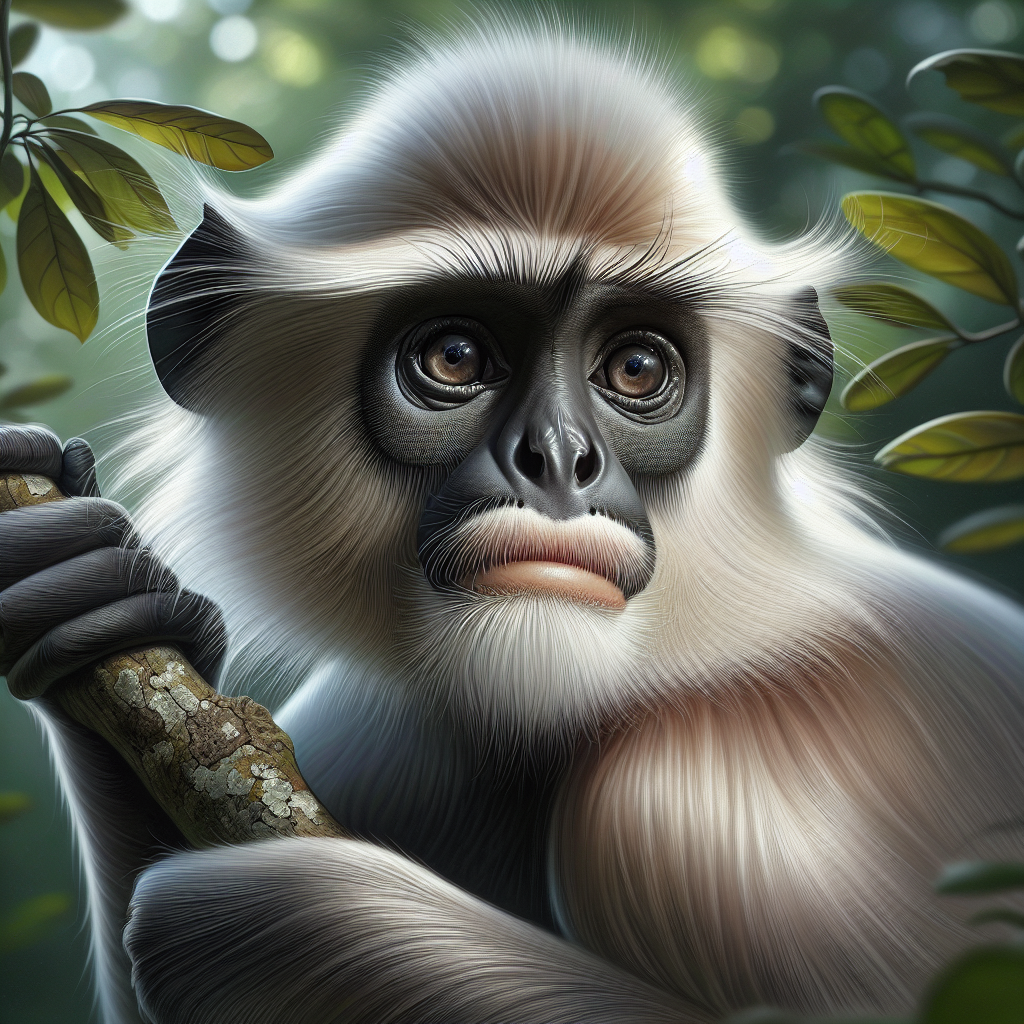The white-headed langur, or Trachypithecus poliocephalus, is not just a whimsical monkey in the wilderness but an emblem of nature's extraordinary ability to enchant and endear. Nestled in the karst landscapes of Guangxi, China, this elusive primate is as fascinating as it is fragile. As one of the world’s rarest primates, the white-headed langur provides a compelling study in the delicate balance of biodiversity and the power of conservation to effect change.
Meet the Marvelous Langur
Hailing from the critically endangered species list, the white-headed langur commands attention with its striking appearance—a stark white head that crowns its dark body, accentuated by a long, expressive tail. Typically residing in the stunning yet rugged terrain of limestone forests, these langurs are predominantly found in the lush confines of Guangxi province.
The history of the white-headed langur is as compelling as its appearance. Not long ago, in the late 20th century, their numbers dwindled to alarming levels due to habitat loss and other human-induced factors. Nevertheless, these fascinating beings now serve as a beacon of hope for conservationists worldwide, exemplifying the resilience of species when met with human compassion and dedicated efforts.
Curious Habits
In their rocky abode, white-headed langurs are predominantly folivorous, consuming a diet rich in leaves, shoots, flowers, and the occasional fruit—a testament to their impeccable adaptation to the sparse resources of limestone forests. Their digestive tracts, specially adapted to break down tough plant fibers, are just one example of nature’s inventive solutions to survival pressures.
Observing these creatures, you might find them engaging in their typical social structure, which is indeed fascinating. Langur groups usually comprise a single dominant male, several females, and their offspring. This social arrangement ensures effective protection, grooming, and care within the troupe, serving as a quintessential example of cooperative behavior and family unity in the animal kingdom.
Conservation: A Story of Hope & Action
Despite grim prospects in the past, the conservation saga of the white-headed langur is one that inspires optimism. Human activities, such as deforestation and urban expansion, once posed significant threats to their habitat. However, intentional conservation strategies, spearheaded by local governments and international organizations, have made a tangible difference. The establishment of the Chongzuo Langur National Nature Reserve in 2005 marks one such pivotal achievement, providing a sanctuary for these beleaguered animals.
Community-led conservation initiatives have also been critical. Collaborative efforts that involve local communities in the stewardship of langur habitats have proven effective. By promoting alternative livelihoods and fostering environmental awareness, these initiatives ensure sustainable coexistence between humans and this remarkable species.
Scientific Marvels Uncovered
Researchers continue to be enthralled by the unique ecological niche occupied by white-headed langurs. Their existence offers exhaustive opportunities for studying speciation, ecological adaptations, and social dynamics. The collective understanding of primatology is significantly enriched by these studies, as each new discovery deepens the empathy and appreciation for these creatures and their role in preserving ecological harmony.
Curiously, the genetic makeup of the white-headed langur provides valuable insights as well. Comparative genomic studies with other primates shed light on evolutionary biology, paving the path for groundbreaking research in conservation genomics and strategies.
White-headed Langurs and Humanity’s Role
As we explore the nuances of the white-headed langur's existence, it becomes clear that humanity holds an influential pen in determining their future. This symbiotic relationship calls on us to embrace our shared responsibility in preserving life in all its wondrous forms.
By investing efforts in the protection and revitalization of this species, we aren't solely saving a member of the primate family; we're safeguarding a piece of nature’s grand tapestry, a living testament to Earth’s enduring creativity. Moreover, such actions reinforce the ethos of benevolent stewardship—a legacy worth nurturing for generations to come.

